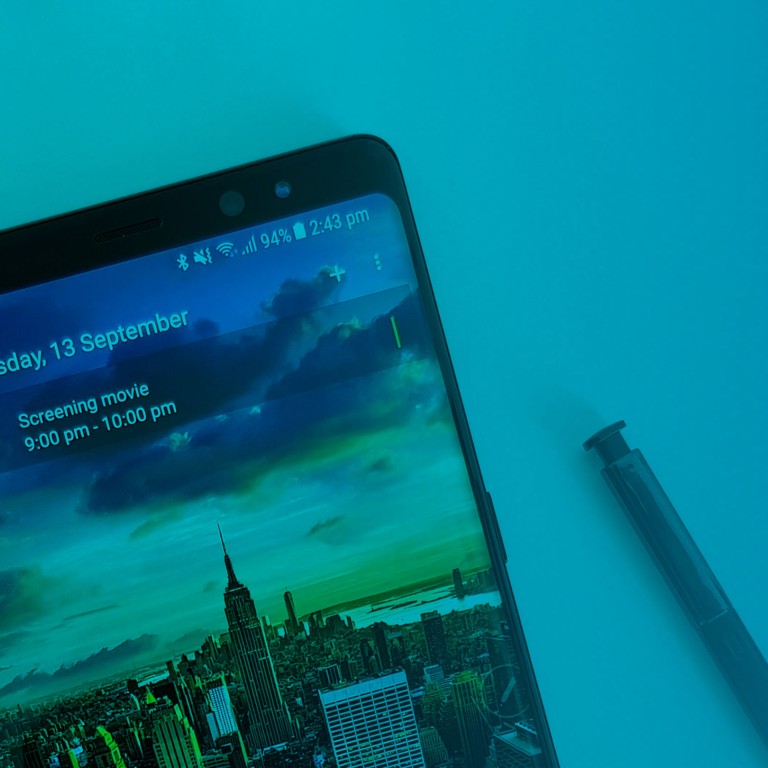
Samsung Galaxy Note 8 review
The Note is back without a bang
There are two types of smartphone users: Those who love the stylus and those who hate it. The former (a camp which famous includes Steve Jobs) believe the stylus to be outdated and redundant; a relic of the Palm Pilot days. The latter swear by their pen-based note-taking and doodling to a fanatical degree. There appears to be no in-between.
This makes the Samsung Galaxy Note 8 purchase decision simple. If you want a stylus, the Note 8 is the only mainstream phone on the market that has one, and since the Note 7 was quickly yanked off store shelves after some batteries started catching fire, you’ve probably been waiting a while for a new one. If you, however, are like Jobs and chuckle at the notion of using a stylus in 2018, then the Note 8 is easy to ignore, considering Samsung make a near-identical phone that costs less in the shape of the Galaxy S8+.
The Note 8 features a gorgeous 6.3-inch OLED screen that spans almost the entire front of the device, curving at the left and right edges to meet the back glass plate for a seamless feel that’s unrivalled in the industry. It’s a really cool design that looks and feels great (images look like they’re spilling off the screen like water off an infinity pool) but sacrifices a bit of usability: The curved parts of the screen increase erroneous palm touches. Under the hood is either a Snapdragon 835 or Exynos 8895 (depending on region), the flagship Qualcomm or Samsung processor of 2017. Whichever CPU you get, it still holds up well today, though both are noticeably inferior to Apple’s A11 and Huawei’s Kirin 970. There’s also a whopping 6GB of RAM, adding up to a whopping spec sheet full of awesome features… that are more or less also on the cheaper Galaxy S8+.
Is the pen mightier?
The stylus, which Samsung calls “S Pen”, can sense up to 4,096 levels of pressure -- enough to tell the difference between light tracing or hard strokes (some will disagree, however). Personally, I still found the Note 8’s display too small to do any real sketching or note taking. Instead, I found the stylus most handy when used as a navigation tool around various apps: For example, when editing videos in the Power Director app, it’s easier to drag the timeline slider with a stylus’ fine tip than with my chubby fingers.
Samsung also gave the Note 8 software a few software tricks that are tied to the stylus, such as the ability to create a gif from any part of the screen, or sending animated written messages. But there seems to be no reason why these features need a stylus to work -- unless Samsung needed more reasons to justify the S Pen.
Dual Cameras
Other than the stylus, why is the Note 8 more expensive than the S8+? There is actually another difference between the two handsets, but its impact is so limited that I haven’t needed to mention it until now. Samsung gave the Note 8 a secondary rear camera to keep up with industry trend, but unlike Apple, LG or Huawei, the Note 8’s dual camera set-up doesn’t bring much notable improvement over the S8’s already excellent camera. In a nutshell, Samsung’s approach to the second camera is the same as Apple’s, but inferior. The secondary telephoto lens can shoot “2X” zoom photos and bokeh effects, but to less impressive degree than the iPhone X or even the iPhone 8. In my opinion, using the second camera for wide-angle shots like LG’s V30 or to soak in more light like Huawei’s devices bring more tangible usability.
This isn’t to say the Note 8 camera is bad, however. Far from it. The almost year-old Galaxy S8’s 12-megapixel camera is still one of the best around and the Note 8’s main camera is the exact same hardware. Shots are clear and vibrant -- maybe too much so, as some find Samsung’s over-saturation processing to be too strong. It’s not the best camera for shooting human subjects (skin tone can be off) but if you’re capturing Andy Warhol art or a bed of flowers? The punchy reds and yellow will impress.
The Note 8 also has optical image stabilisation for both lenses, and they work in video too. Videos shot here are smooth, and focus times are the fastest I’ve seen.
Surprising battery life
Elsewhere, battery life on the Note 8 is surprisingly decent considering its relatively small 3,300 mAh cell, which is actually smaller than the battery inside the similar-sized Galaxy S8+. But, considering that the Note 7’s (literally) fiery demise was due to its overambitious battery capacity, who can fault Samsung for playing it safe here?
On average, the Note 8 would last me about nine to ten hours. That’s not quite a full day out, but close enough that you won’t really need to top up until after dinner. When the Note 8 get an upgrade to the more energy-efficient Android 8.0 (right now it’s still running on the outdated Android 7.1.1), battery life should improve.
If the Galaxy S8+ didn’t exist, the Note 8 would get a glowing recommendation. But as it stands now, it’s hard to recommend the Note because most consumers are better off with the S8+, which is around US$150 cheaper and has slightly longer battery life. Unless, of course, you really need that stylus -- and if that's the case you probably made your mind up a long time ago.
For more insights into China tech, sign up for our tech newsletters, subscribe to our Inside China Tech podcast, and download the comprehensive 2019 China Internet Report. Also roam China Tech City, an award-winning interactive digital map at our sister site Abacus.

